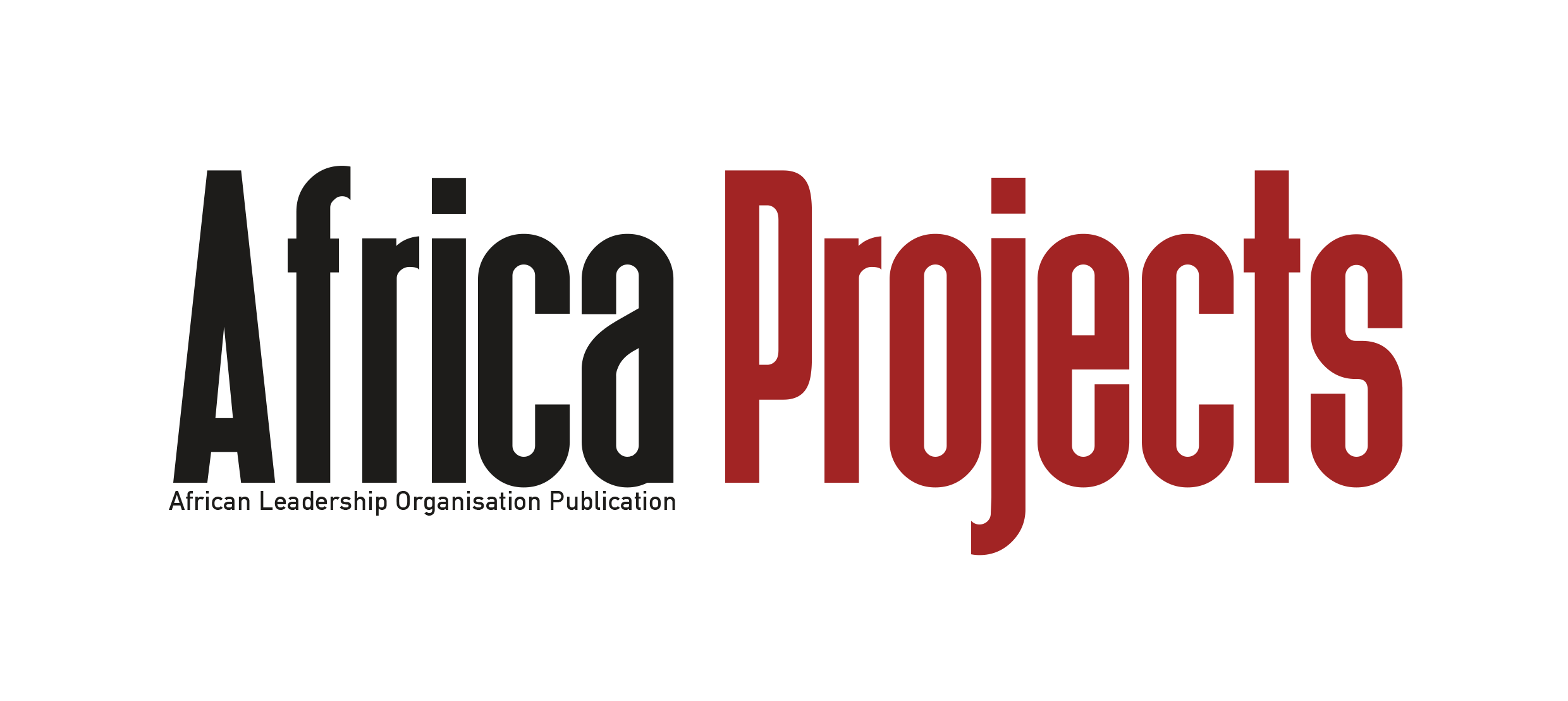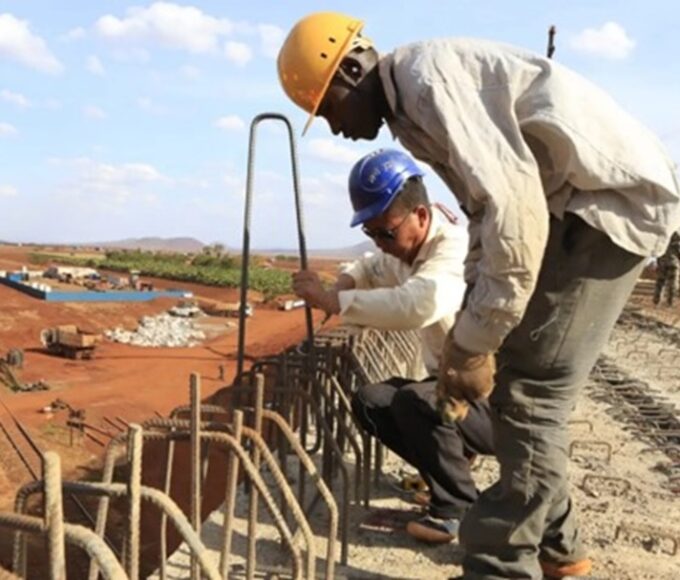- Home
- Features
- Startup Zone
- Projects
- Policies
- Shop
- Policies
- Projects
- Startup Zone
- Country Spotlight
- Analysis
- Tech
- Policies
- Projects
- Startup Zone
- Country Spotlight
- Analysis
- More
- Beyond the Kalashnikov: Africa’s Shift Toward Technology-Driven Warfare
- Afrail Express: Uniting a Continent on Rails
- AFRICA’S ENERGY CORRIDORS: CONNECTING POWER, PEOPLE, AND PROSPERITY
- Startup Lions Campus: Empowering Kenya’s Digital Generation
- L’Art de Vivre’s Le Paradis de Mahdia: Tunisia’s Model for Sustainable Luxury
- The Lobito Corridor: Rewiring Africa’s Trade Arteries Through Strategic Infrastructure
- AFRICA’S GREEN ENERGY TRANSITION: A BEACON OF HOPE FOR CLIMATE ACTION
- Dangote Refinery: Showcasing Africa’s Project Success Story
- AFRICA GREEN ECONOMY: ALL YOU NEED TO KNOW
- The Most Important Amicus Brief in the History of the World
- The Rise of Indigenous UAVs: Africa’s Drone Capabilities in Warfare and Surveillance
- AFRICA’S LARGEST OIL PRODUCERS: A COMPREHENSIVE OVERVIEW
- Beyond the Kalashnikov: Africa’s Shift Toward Technology-Driven Warfare
- Afrail Express: Uniting a Continent on Rails
- AFRICA’S ENERGY CORRIDORS: CONNECTING POWER, PEOPLE, AND PROSPERITY
- Startup Lions Campus: Empowering Kenya’s Digital Generation
- L’Art de Vivre’s Le Paradis de Mahdia: Tunisia’s Model for Sustainable Luxury
- The Lobito Corridor: Rewiring Africa’s Trade Arteries Through Strategic Infrastructure
- AFRICA’S GREEN ENERGY TRANSITION: A BEACON OF HOPE FOR CLIMATE ACTION
- Dangote Refinery: Showcasing Africa’s Project Success Story
- AFRICA GREEN ECONOMY: ALL YOU NEED TO KNOW
- The Most Important Amicus Brief in the History of the World
- The Rise of Indigenous UAVs: Africa’s Drone Capabilities in Warfare and Surveillance
- AFRICA’S LARGEST OIL PRODUCERS: A COMPREHENSIVE OVERVIEW
- Beyond the Kalashnikov: Africa’s Shift Toward Technology-Driven Warfare
- Afrail Express: Uniting a Continent on Rails
- AFRICA’S ENERGY CORRIDORS: CONNECTING POWER, PEOPLE, AND PROSPERITY
- Startup Lions Campus: Empowering Kenya’s Digital Generation
- L’Art de Vivre’s Le Paradis de Mahdia: Tunisia’s Model for Sustainable Luxury
- The Lobito Corridor: Rewiring Africa’s Trade Arteries Through Strategic Infrastructure
- Startup Zone
Top Insights
Africa’s Aviation Industry: Can It Compete Globally?

Africa, often called the next frontier for economic growth, is poised for potential advancements in several industries, with aviation being one of the most promising. By 2030, Africa’s aviation industry aims to significantly increase its contribution to global aviation, buoyed by a budding middle class, rising tourism, and essential trade endeavours. Despite these elements suggesting a thriving future, Africa’s aviation sector faces significant hurdles. The continent accounts for only 2.1% of global air transport activities, starkly contrasting with its 18% share of the global population. Can Africa overcome these challenges and establish a recognisable presence in global aviation? This article delves deep into Africa’s aviation landscape, evaluating its strengths, weaknesses, and prospects.
The Current State of Africa’s Aviation Industry
Africa’s aviation landscape presents a paradox: while the demand for air transport is growing rapidly, the industry has yet to capture its fair share of the global market. Various factors contribute to this underperformance, including poor infrastructure, fragmented regulations, high operational costs, and inadequate training and skills development.
READ ALSO: Airports in Transformation: Ethiopia’s Vision for Bole
Infrastructure Constraints
The lack of robust aviation infrastructure is perhaps the most significant obstacle. Although notable advancements have been made in cities like Addis Ababa, Nairobi, and Johannesburg, many airports remain underdeveloped or lack essential facilities. This infrastructural inadequacy hampers efficiency, resulting in subpar customer experience and increased operational costs. According to the International Air Transport Association (IATA), the cumulative losses for African airlines totalled $3.5 billion between 2020 and 2022, with expected further losses of $213 million in 2023.
Regulatory Hurdles
Africa’s aviation industry is burdened by regulatory inefficiencies, leading to a fragmented air travel network. While organisations like the African Union and the African Civil Aviation Commission are pursuing standardisation, implementation often lags behind the necessary ambition. For airlines to operate efficiently, there must be harmonisation of regulations, fostering seamless connections across borders.
Financial Constraints
Financial stability remains elusive for many African airlines. A lack of liquidity, coupled with banking challenges, creates a precarious situation for carriers needing significant capital to invest in modernising fleets or expanding operations. The need for effective financing solutions is evident to ensure growth in this sector.
Skills Shortages
The aviation industry demands a skilled workforce, from pilots to ground staff. Unfortunately, Africa currently faces a deficit in qualified personnel due to insufficient training facilities and educational programs. This skills gap impacts the industry’s capacity for growth and undermines safety standards.
The Economic Potential of Aviation
Despite these challenges, the potential economic benefits of expanding Africa’s aviation industry are immense. Currently supporting approximately 7.7 million jobs and generating around $63 billion annually, the sector’s growth capacity is exponential. Projections indicate that demand for air travel in the region could triple over the next two decades.
Air transport is not merely a means of mobility; it is a catalyst for economic development, enhancing trade, tourism, and overall connectivity. It aids in reaching the United Nations’ Sustainable Development Goals by fostering inclusivity, creating job opportunities, and boosting local economies.
The Role of Initiatives like Focus Africa
The Focus Africa initiative, championed by IATA, aims to optimise the aviation sector’s performance in Africa through six critical focus areas:
1. Safety: Improve safety standards via data-driven programs designed to minimise incidents.
2. Infrastructure: Develop efficient and secure aviation infrastructure to enhance operational effectiveness.
3. Connectivity: Promote liberalised intra-African market access through the Single African Air Transport Market (SAATM).
4. Finance and Distribution: Advance modern retailing standards and secure financial services to airlines.
5. Sustainability: Align the African aviation sector with global emissions targets to promote sustainability.
6. Future Skills: Create a pipeline of skilled aviation professionals to meet future demands.
Partnerships among stakeholders in the aviation ecosystem will be crucial for achieving the ambitious goals of the Focus Africa initiative.
Drivers of Growth in Africa’s Aviation Industry
Rising Middle Class
Africa is experiencing a demographic shift that promises to reshape the continent’s economy. A burgeoning middle class will fuel demand for flying, not only for business travel but also for personal leisure trips. The aviation industry must adapt to cater to this new demographic by offering more affordable and flexible air travel options.
Increased International Business
With the globalisation of trade, there is a growing need for efficient air transport to facilitate business connections. As African economies become more interconnected, the demand for quick and reliable air travel for corporate purposes is burgeoning. Airlines that position themselves strategically to cater to this need will probably thrive.
Tourism Growth
Africa is rich in biodiversity, cultural heritage, and stunning landscapes, which foster immense tourism potential. An increase in international and domestic travel boosts demand for flights, thereby enhancing the aviation sector. Efforts to develop unique tourism experiences, promote travel, and enhance accessibility to attractions will significantly bolster the industry.
The African Continental Free Trade Area (AfCFTA) and SAATM
The AfCFTA seeks to create a unified market across Africa, and its successful implementation can potentially transform aviation on the continent. By reducing trade barriers and enhancing economic cooperation, these initiatives pave the way for booming intra-African travel. Airlines that are well-positioned to leverage these developments could see exponential growth.
Comparative Analysis of Aviation Markets in Africa
South Africa: The Aviation Leader
As Africa’s second-largest economy, South Africa boasts a highly developed aviation sector. Major airports such as OR Tambo International Airport act as significant hubs for both regional and international flights. Despite facing challenges like congested airspace and infrastructure bottlenecks, the country’s commitment to upgrading airport facilities and its investment in modern aircraft ensure its position as a regional leader.
Ethiopia: A Standout Performer
Ethiopian Airlines has consistently outperformed its regional competitors, becoming one of the continent’s largest airlines. Notably, it has maintained a robust network of global and regional connections. The airline’s commitment to investment in modern technology, sustainable aviation fuels, and infrastructure at the future Abusera airport positions Ethiopia favourably for growth in air transport.
Nigeria: Growth Challenges Amid Potential
As Africa’s largest economy, Nigeria’s aviation sector is marked by substantial growth, although it faces significant hurdles. A burgeoning population and an increasing middle class envision a greater demand for air travel. Simultaneously, issues related to poor infrastructure, high fuel costs, and regulatory bottlenecks hinder the industry from maximising its potential.
Kenya: Regional Trade and Tourism
Kenya’s aviation sector has grown steadily, with Jomo Kenyatta International Airport being an integral hub for both passengers and cargo. The rise in regional trade and tourism will continue to support this growth trajectory, especially as Nairobi strengthens its position as a commercial centre.
Egypt: A Robust Aviation Network
Egypt’s aviation sector remains one of North Africa’s strongest, given the significant influence of the tourism industry on the economy. Cairo International Airport serves as a vital hub, with growing air traffic tied to the influx of international visitors.
Emerging Markets: Opportunities Awaiting Development
Regions with lower GDPs, such as Chad and Mozambique, currently present underdeveloped aviation sectors yet hold growth potential. These markets, once appropriate infrastructure investments are made, could position themselves as new travel destinations. The introduction of low-cost carriers (LCCs) may enable broader access to air travel, stimulating demand.
Opportunities for the Future
Infrastructure Modernisation
Investment in airport infrastructure is crucial for Africa’s aviation growth. Modernising terminals and air traffic management systems will enhance passenger experience and increase handling capacity. Key cities like Addis Ababa, Nairobi, and Lagos are making strides, but significant work remains.
Expansion of Low-Cost Carriers (LCCs)
The introduction and expansion of low-cost carriers can democratize air travel, making it accessible to a broader audience. These airlines can stimulate demand by offering affordable options that cater to the rising middle class looking for travel opportunities.
Tourism Opportunities
Africa’s natural beauty positions the continent for strengthening international tourism—a significant driver of aviation growth. Strategic marketing, the development of regional tourism, and enhanced transport connections will place Africa on the global tourism map. Collaboration between governments and airlines is crucial to seize these opportunities.
Embracing Sustainability
With environmental awareness on the rise, African aviation can seize the opportunity to adopt sustainable practices and technologies that minimise carbon emissions. By investing in electric aircraft and sustainable aviation fuels, the continent can position itself as a leading player in the global push for greener travel.
Overcoming Challenges
Despite the numerous opportunities, Africa’s aviation sector must address persistent challenges.
Harmonizing Regulations
Standardising aviation regulations across the continent is crucial for developing a cohesive air transport network. The African Union must promote collaboration among member states to minimise bureaucratic inefficiencies and foster seamless connectivity.
Addressing Infrastructure Bottlenecks
Investment in modernising infrastructure is necessary to handle increasing air traffic. This improvement should focus not only on airports but also on developing supports like improved roads and rail networks that connect airports to key urban areas.
Ensuring Security and Stability
Political instability and safety concerns can deter investment and reduce tourism. Governments must prioritise creating a secure environment for both national and international airlines to flourish.
As Africa rises as a critical player in the global economy, the aviation industry holds transformative potential for growth. By capitalising on its favourable demographics, increasing travel demand, and implementing effective initiatives like the African Continental Free Trade Area and the Single African Air Transport Market, Africa can strategically position itself within the global aviation landscape.
However, this ambition requires addressing the underlying challenges of fragmented regulations, inadequate infrastructure, and financial hurdles. Partnerships and collaboration among stakeholders will be pivotal to unlocking Africa’s aviation sector’s potential.
Overcoming these obstacles will ensure that Africa not only enhances its aviation contributions but also fully realises the economic and social benefits that come with it. By embracing this transformative industry, Africa can soar to new heights in the global aviation arena. Only through commitment, collaboration, and adaptability can the continent fully harness the power of aviation for a prosperous future.
Recent Posts
Related Articles
How China Is Reshaping Africa’s Infrastructure Landscape
In the past two decades, China’s influence in Africa, particularly in the...
ByafricaprojectSeptember 29, 2025Solving Africa’s Renewable Energy Intermittency: Storage Innovations
The move to renewable energy in Africa is crucial, given the rising...
ByafricaprojectSeptember 17, 2025Mega Ports and Maritime Expansion: Africa’s Gateway to Global Trade
As Africa stands on the precipice of economic transformation, its port infrastructure...
ByafricaprojectSeptember 8, 2025The Cost of Poor Roads: How Infrastructure Deficits Hurt Africa’s Economy
Africa is poised for economic growth and prosperity, yet a significant barrier...
ByafricaprojectSeptember 5, 2025












